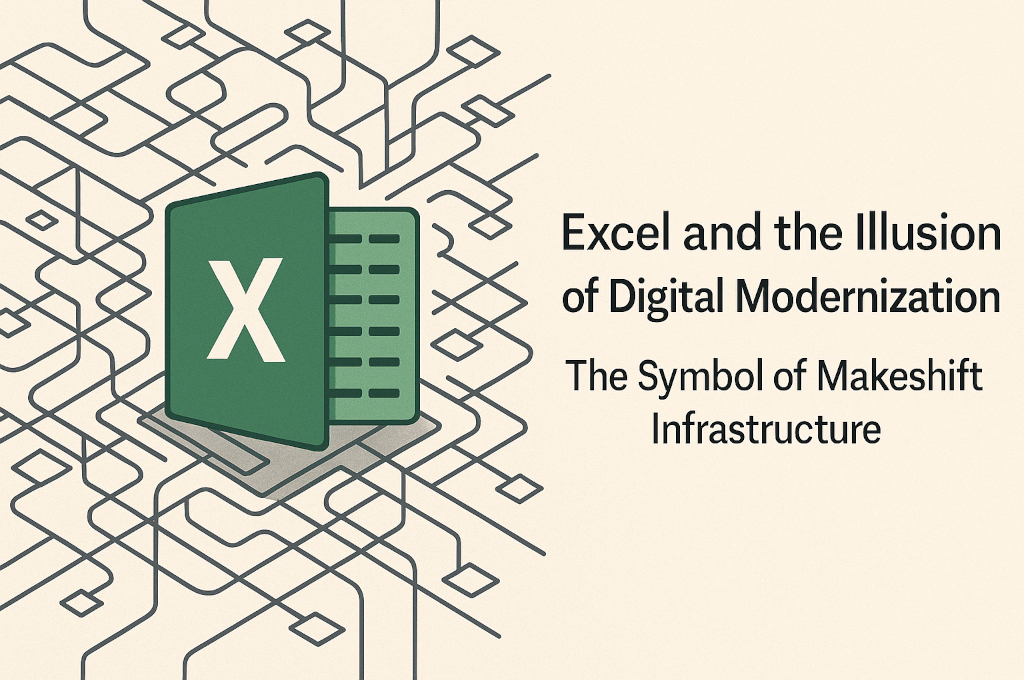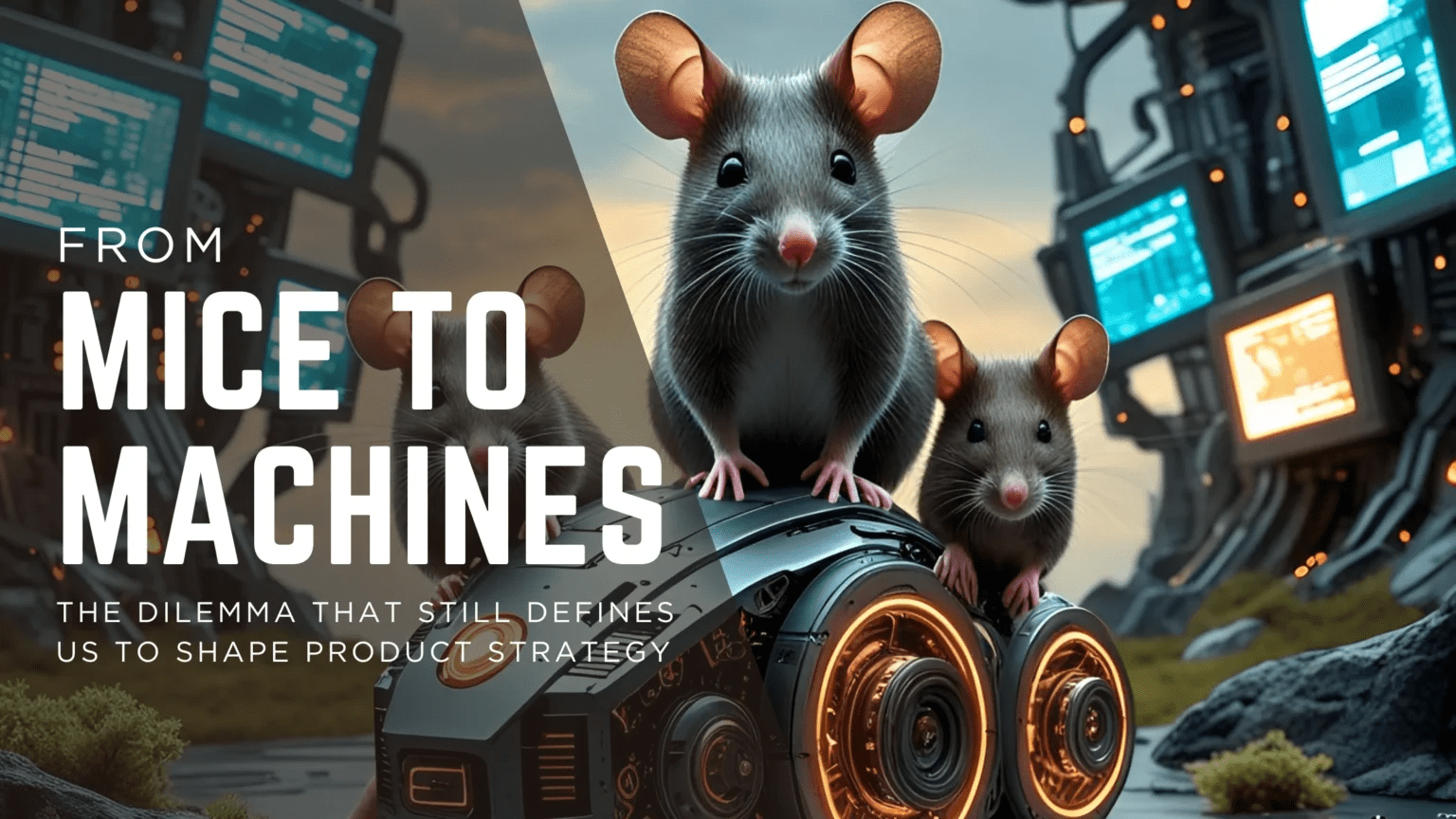Nov11

New Day, CNN's morning TV show, was discussing the digital platform economy and the case of a company that weirdly caught my attention; since the beginning of the week, a curious gut feeling was urging me to investigate digital transformation scenarios similar to that of this company. I could not understand why.
Christine Romans, the TV show host, was telling the story of J&S Food Inc., a leading firm in the global food industry. The company was losing market shares and money; the platform economy's expansion in the food sector brought in new competitors including Amazon Fresh, Fresh Direct, Instacart, and Growcer. Their new food shopping experience—online food shopping, virtual supermarkets, smart shopping carts—disrupted the industry and by extension, made many aspects of the company irrelevant particularly, its business model and more importantly its IT.
"J&S Food? that name sounds like a mystery," I whispered. I stood and opened the curtain; Capital Boulevard in downtown Raleigh was under the rain. "Perfect weather for staying home and dig on AWS cybersecurity," I whispered again when my smartphone suddenly rang. It read, "J&S Food, Hoboken, NJ." Confused by the strange coincidence, I picked up the call.
In a French accent that I recognized immediately, Jean-Pierre introduced himself as the J&S Food's CIO. After the greeting and civilities, he went straight to the point, "I know your work on AWS, I love it. I've attended your conference in Hamburg, I've even read your latest book Transforming Your Business with AWS: Getting the Most Out of Using AWS to Modernize and Innovate Your Digital Services. (John Wiley & Sons). A master piece. I need your help."
Delighted by these morning compliments, but above all, troubled by the gut feeling that J&S Food would get in touch, I stuttered, "How... How... can I help you?" Enthusiastic, Jean-Pierre replied, "To survive, J&S Food must go digital. We want you to team up with our Enterprise Architect to help us achieve it."
Two hours later, the Webex meeting between Jean-Pierre, Wei, and me took place. The next day we kicked off J&S Food's digital transformation project.
I was leading AWS engagements for almost 14 years, and was known for easing complex AWS migrations using agile methodologies. My record included datacenter migrations to cloud, digital transformations, and the development of highly innovative digital products based on Machine Learning (ML) and Internet of Things (IoT). On the other hand, Wei, the Singapore-born enterprise architect, had a different profile; for nearly 21 years, he advised CIOs on how to leverage IT to boost business profits. SAP's Kaan Turnali's quote, "Digital transformation isn't a technology makeover, it's a business revolution," summarized Wei's digital transformation doctrine.
The big question was, how we would go about it? Wei and I agreed on the team and on using scrum as the framework to support the digital transformation effort. I tended to use Jira Scrum as a lightweight framework for managing projects with aggressive deadlines and complex requirements by augmenting its delivery lifecycle's steps with varied tools and methodologies as deemed as necessary. These augmented steps made the transformation effort iterative and incremental, they included:
This educational and learning article about AWS Digital Transformation tells the unprecedented story of how an Enterprise Architect and an AWS Digital Transformation Strategist teamed up to help a global firm to restore its competitiveness.
“ Tackle Your Business Model Transformation Issue First Or Prepare To Completely Fail
Wei was one of the few enterprise architects claiming that making the business model transformation the starting point of the digital transformation project is creating the conditions for success. "Business first, technology next," was his mantra. He was right, the chief goal is to adjust the way the company does business to the requirements of the digital competitive environment, and certainly not the ill-considered deployment of technologies that the company doesn't necessarily need. Experience shows that most companies engaged in digital transformation with in mind the belief that, alone technology deployment mechanically boosts benefits, fail to generate the expected revenues.
As he walked to the paperboard at the back of the meeting room, he recalled the strategic planning process complexity, "the challenge is to establish a roadmap that not only brings out the organizational, operational, and technological changes to implement, but that also tells how and when to implement these changes."
Under the watchful eye of the meeting participants, he drew a diagram which depicted a two-step digital business transformation planning process including redesigning the business model which was about designing the business solution that would help the company to meet its digital challenges and planning the business transformation which was about developing the company's digital transformation roadmap.
Using a collaborative approach involving the marketing and sales representatives, based on three questionnaires—industry analysis, business impacts analysis, digital strategy map—Wei identified the changes in the food industry, spotted their impacts on J&S Food's business model, facilitated J&S Food's digital strategy development, and then derived the transformation solutions needed to adapt the company to the new competitive environment.
The decisions made as part of the digital transformation solutions included:
The intent of the smart shopping bag was to offer a superior food shopping experience by allowing customers to skip the checkout line in J&S Food's physical stores. They would save a precious time.
The roadmap that resulted from the discussions included three phases: Implementation, Experiment, and Deployment. They reflected J&S Food's digital transformation journey.
In a louder voice, as if to ask more attention, Wei explained, "As the roadmap translates it, the bottom line of our digital transformation strategy is to implement four digital business performance enablers including technology, operational model, organizational model, and people." As participants fell silent, he clarified, "About technology, our IT infrastructure including the ecommerce applications will migrate to AWS cloud to not only cut IT expenses but also to accelerate IT operations. It's good for our time-to-market and for our responsiveness to industry changes. With regard to the operational and organizational models, we'll deploy a Cloud Operating Model for AWS, Scrum Agile, and probably an Ecommerce Operating Model. And as for people, concerned IT and business staff will be either hired or trained to AWS, Agile, and digital business platform."
Waving his hands, as if willing to convince, Wei continued, "These digital business performance enablers will be implemented through three phases involving 8 sprints of 50 architecture, migration, software, and platform deployment activities. These phases include: Implementation concerned with their implementation, Experiment dedicated to their experimentation through a pilot a project, and Deployment focused on deploying enterprise-wide the final releases of the AWS cloud, applications, digital food platform, the smart shopping bag along with the operational and organizational models."
The magic with Wei's Digital Business Model Development framework, as astonished Jean-Pierre admitted it was that, "The combined application of the three questionnaires (industry analysis, impact analysis, and digital strategy map) made it possible to identify the food industry disruptors and pinpoint the impacted business aspects likely to be adjusted to the platform business requirements and digitized with technology."
“ Derive Your AWS Platform Architecture from Your Business Architecture Then Optimize it Using The AWS Well-Architecture Framework (WAF) Best Practices
Three days later, according to the roadmap instructions, it was my turn to contribute to J&S Food's digital transformation; I had to develop the AWS platform's architecture that would support the company's digital business. It's important to note that, by developing the J&S Food's digital business architecture, Wei did an important part of the job. He provided the logical (or functional) architecture that would serve as the baseline for developing the AWS cloud architecture.
The meeting room was set up so that everyone could easily see the one-page PowerPoint presentation that I prepared and hear me; participants were arranged in a semicircle in front of me. They included enthusiastic Jean-Pierre and Wei, brilliant IT operations director Laetitia, plus some 20-25 thrilled developers, IT and database (DB) admins. They attended the workshop as part of my commitment to transfer AWS knowledge.
After the greeting, I warned, "Designing a cloud architecture must be supported by business motives, that is how Wei's digital business architecture is fundamental." He smiled, hiding rather badly his pride.
As I displayed the one-page presentation, I said, "The process isn't that easy; it's an effort where the building blocks, functions, and features of the business architecture are iteratively and incrementally mapped to the AWS services likely to enable them. The resulting technical platform is then fine-tuned based on the architectural best practices of the AWS Well-Architected Framework (WAF) five pillars: operational excellence, security, reliability, performance efficiency, and cost optimization."
Participants were listening quite carefully, some were taking notes while others were capturing the displayed AWS architecture development framework with their smartphone.
The story told by the one-page presentation was that, developing AWS solution architectures takes two fundamental elements: the business architecture as the input and the AWS Cloud Architecture Framework (CAF) as the generator of the desired AWS solution architecture.
As illustrated, the digital business architecture as designed by Wei, recommended two platforms including the smart shopping bag system and the digital food platform as well as the use of microservices and containers to make easy and speedy the application development process. Speaking directly to the technical team, I clarified, "From the AWS solution architecture perspective, the business architecture is the formulation of cloud architectural expectations and requirements not only in terms of compute, storage, and network virtual capabilities but also in terms of security, reliability, performance efficiency, operational excellence, and cost optimization expectations."
Anticipating the technical team’s questions, I hastened to propose, "Let’s see how the AWS architecture engineering framework will make this highly complex process simple." The audience fell silent.
Read the rest of the article on LinkedIn: https://www.linkedin.com/pulse/180-days-immersed-aws-universe-how-js-food-went-philippe-a-abdoulaye
Keywords: Cloud, Digital Transformation, Innovation
 Building an Intelligent Flight Assistant: A Multi-Level AI Journey - Agentic and Gemini 2.5 Flash
Building an Intelligent Flight Assistant: A Multi-Level AI Journey - Agentic and Gemini 2.5 Flash The Excel Trap
The Excel Trap From Mice to Machines: The Dilemma That Still Defines Us to shape Product Strategy
From Mice to Machines: The Dilemma That Still Defines Us to shape Product Strategy Seven Rules of Brilliant Speakers That Are Not Taught at University
Seven Rules of Brilliant Speakers That Are Not Taught at University When Private Alignment Isn’t Public: The Hidden Saboteur of Transformation
When Private Alignment Isn’t Public: The Hidden Saboteur of Transformation